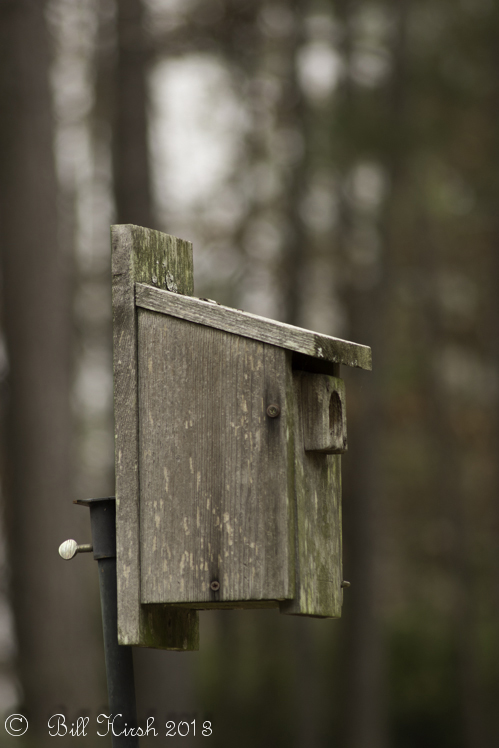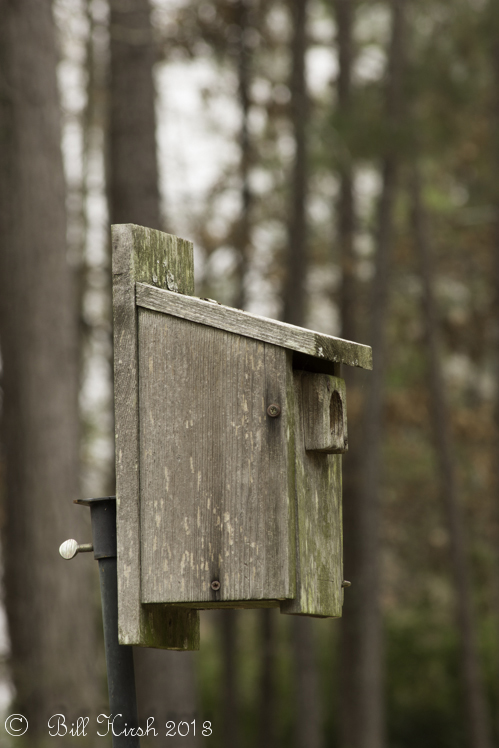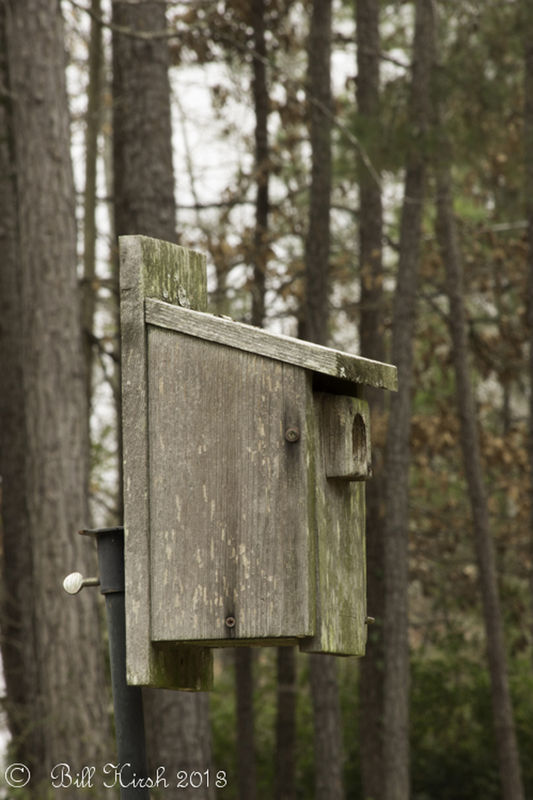ROCK ON PHOTOS EDU / From Rockin What You Got.
Feb 8, 2013 20:40:29 #
EXPOSURE TRIANGLE
It was suggested that I take over this activity. So I will give it a try and see how it goes.
Let see if we can get Exposure down pat for us Amateur Photographers. I first want to bring up the Exposure Triangle . 1.) Aperture: 2.) Shutter Speed: 3.) ISO The Exposure Triangle, consist of these three items used in Manual shooting Mode indicated my big M on the screen selected with our mode dial.
1.) Aperture- The Aperture is a hole located on the inside of the lens consisting of 6 overlapping metal blades designed to open and close depending on what aperture (F-Stop) f4.5, f5.0, f5.6, f6.3, f7.1, f8.0, f9.0, f10, f11, f13, f14, f16, f18, f20, f22, f25, (my camera) you have set in your camera. The aperture controls the amount of light that passes through to hit the sensor.
2.) Shutter Speed- The function of the shutter is to admit light into the camera by control of the amount of time it takes the light to hit the sensor. Indicated as standard shutter speed times in/on your camera and in viewfinder as whole numbers shown as fractions of time: 1, 0.8, 0.6, 0.5, 0.4, 0.3, ¼, 1/5, 1/6, 1/8, 1/10, 1/13, etc on up to 1/4000 (on my camera) know as fractions of Seconds.
3.) ISO- ISO controls the sensitivity of light falls onto the sensor. An easy way as was explained to me, consider ISO as a worker Bee, If I have 100 ISO worker bees set in my camera and you have 200 ISO worker Bees in your camera, and all the other settings are the same, aperture, Shutter Speed, who will get the picture first? You will with 200 ISO worker Bees. So we now know ISO settings go from Auto, 100,200, 400, 800, 1600, 3200, 6400 (my camera).
Now an easy way that I understand this process of Exposure is when we set Our Aperture (F-stop f5.6) and have an ISO setting of 100 our shutter speed is controlled by our settings which at this time pointing my lens at my lamp it gave me a Shutter speed of 1/5. So by saying this when we change one aspect F-stop or ISO we also control the operation of the shutter speed. This is called the Exposure Triangle.
Metering the Exposure
On Canon Cameras we have a Exposure Compensation meter shown by a line with tick marks and numbers along with. One side being positive and the other being negative.
-3 . .2 . .1 . . 0 . . 1 . . 2 . . 3 on Canon, left side is under exposed and right side is over exposed.
3 . . 2 . . 1 . . 0 . . 1 . . 2 . . 3- on Nikon, left side is over exposed and right side is under exposed.
Underneath the meter line on Canon we have a Blinky mark that moves back and forth to indicate under, proper, or over exposed. On Nikons I think the whole line moves if I am not mistaken. As we turn our dial to move the meter blinky back and forth to select our exposure our shutter speed changes to the give us the proper setting.
Exercise 1 Three photos controlling DOF (depth of field); The APERTURE controls the DOF as we know the lower the number in F-Stop (f-4.0) the more shallow DOF and the bigger the F-Stop number (f-22) the deeper the DOF. With this Exercise use the smallest F-stop number, then F-11, and F-22. I recommend using a tripod, shooting outside, selection a lone object either fixed in place or setup but also give you self some background to show your DOF. Please post along with these tree photos you camera settings or Aperture, shutter speed, ISO and Lens. I will be posting a Blue Bird house I have in front yard. Tell us what you noticed when you were taking these photos. Also play with them see what happens when you go through all the F-Stops. Try to keep you meter 0(zeroed) unless the sunlight does not allow it. You might want to underexpose.
It was suggested that I take over this activity. So I will give it a try and see how it goes.
Let see if we can get Exposure down pat for us Amateur Photographers. I first want to bring up the Exposure Triangle . 1.) Aperture: 2.) Shutter Speed: 3.) ISO The Exposure Triangle, consist of these three items used in Manual shooting Mode indicated my big M on the screen selected with our mode dial.
1.) Aperture- The Aperture is a hole located on the inside of the lens consisting of 6 overlapping metal blades designed to open and close depending on what aperture (F-Stop) f4.5, f5.0, f5.6, f6.3, f7.1, f8.0, f9.0, f10, f11, f13, f14, f16, f18, f20, f22, f25, (my camera) you have set in your camera. The aperture controls the amount of light that passes through to hit the sensor.
2.) Shutter Speed- The function of the shutter is to admit light into the camera by control of the amount of time it takes the light to hit the sensor. Indicated as standard shutter speed times in/on your camera and in viewfinder as whole numbers shown as fractions of time: 1, 0.8, 0.6, 0.5, 0.4, 0.3, ¼, 1/5, 1/6, 1/8, 1/10, 1/13, etc on up to 1/4000 (on my camera) know as fractions of Seconds.
3.) ISO- ISO controls the sensitivity of light falls onto the sensor. An easy way as was explained to me, consider ISO as a worker Bee, If I have 100 ISO worker bees set in my camera and you have 200 ISO worker Bees in your camera, and all the other settings are the same, aperture, Shutter Speed, who will get the picture first? You will with 200 ISO worker Bees. So we now know ISO settings go from Auto, 100,200, 400, 800, 1600, 3200, 6400 (my camera).
Now an easy way that I understand this process of Exposure is when we set Our Aperture (F-stop f5.6) and have an ISO setting of 100 our shutter speed is controlled by our settings which at this time pointing my lens at my lamp it gave me a Shutter speed of 1/5. So by saying this when we change one aspect F-stop or ISO we also control the operation of the shutter speed. This is called the Exposure Triangle.
Metering the Exposure
On Canon Cameras we have a Exposure Compensation meter shown by a line with tick marks and numbers along with. One side being positive and the other being negative.
-3 . .2 . .1 . . 0 . . 1 . . 2 . . 3 on Canon, left side is under exposed and right side is over exposed.
3 . . 2 . . 1 . . 0 . . 1 . . 2 . . 3- on Nikon, left side is over exposed and right side is under exposed.
Underneath the meter line on Canon we have a Blinky mark that moves back and forth to indicate under, proper, or over exposed. On Nikons I think the whole line moves if I am not mistaken. As we turn our dial to move the meter blinky back and forth to select our exposure our shutter speed changes to the give us the proper setting.
Exercise 1 Three photos controlling DOF (depth of field); The APERTURE controls the DOF as we know the lower the number in F-Stop (f-4.0) the more shallow DOF and the bigger the F-Stop number (f-22) the deeper the DOF. With this Exercise use the smallest F-stop number, then F-11, and F-22. I recommend using a tripod, shooting outside, selection a lone object either fixed in place or setup but also give you self some background to show your DOF. Please post along with these tree photos you camera settings or Aperture, shutter speed, ISO and Lens. I will be posting a Blue Bird house I have in front yard. Tell us what you noticed when you were taking these photos. Also play with them see what happens when you go through all the F-Stops. Try to keep you meter 0(zeroed) unless the sunlight does not allow it. You might want to underexpose.
Canon T3i; ISO 100 f4.0

Canon T3i; ISO 100 f11

Canon T3i; ISO 100 f22

Feb 8, 2013 22:39:03 #
sportyman140 wrote:
EXPOSURE TRIANGLE br br It was suggested that I t... (show quote)
Sportyman, this looks really good. Let's hope you get a lot of takers.
SS
Feb 9, 2013 03:20:44 #
FAQ: Understanding Exposure: shutter duration, aperture, and ISO
http://www.uglyhedgehog.com/t-26504-1.html
http://www.uglyhedgehog.com/t-26504-1.html
Feb 9, 2013 04:06:59 #
I heard someone reference the exposure pie once, and I actually like that a lot more than "triangle" and hope everyone will adopt that line of thinking :-)
Feb 9, 2013 07:42:08 #
sportyman140 wrote:
EXPOSURE TRIANGLE br br It was suggested that I t... (show quote)
You can do it. Keep it up.
Feb 9, 2013 09:43:27 #
sportyman140 wrote:
EXPOSURE TRIANGLE
It was suggested that I take over this activity. So I will give it a try and see how it goes.
It was suggested that I take over this activity. So I will give it a try and see how it goes.
I just discovered this series two days ago, and am planning to print out the lot. Not because I am a beginner, but because I like different points of view, and because the more I know, the more I realize how little I know. I am sure that here and there I'll find new (for me) information, and I will be working through the lessons.
Thank you for taking over!
EstherP
Feb 9, 2013 17:27:28 #
WYp8riot wrote:
How many variables in "the exposure pie"? Exposure triangle term used because of only three settings affect exposure.I heard someone reference the exposure pie once, and I actually like that a lot more than "triangle" and hope everyone will adopt that line of thinking :-)
Feb 9, 2013 19:43:38 #
Nikonian72 wrote:
WYp8riot wrote:
How many variables in "the exposure pie"? Exposure triangle term used because of only three settings affect exposure.I heard someone reference the exposure pie once, and I actually like that a lot more than "triangle" and hope everyone will adopt that line of thinking :-)
It is still about three settings, but with the pie the idea is that you have three slices. if you increase the size of one you must decrease another to still have the ideal exposure.
http://www.youtube.com/watch?v=hMpgiyGm0nw
Feb 11, 2013 06:46:51 #
Feb 11, 2013 06:47:55 #
Feb 11, 2013 06:55:04 #
You are so right I just watched the video and it really was simple to understand. Thank you very much for the tip.
Feb 11, 2013 06:56:28 #
Thank you for your support and I will try to be the best I can. Or shall I say teach it the Best I Can.
Feb 11, 2013 09:35:34 #
sportyman140 wrote:
You are so right I just watched the video and it really was simple to understand. Thank you very much for the tip.
You are welcome, assuming you are referring to the pie video.
Feb 11, 2013 17:27:45 #
also with pie you get ice cream or cool whip!
Feb 11, 2013 17:37:34 #
sinatraman wrote:
also with pie you get ice cream or cool whip!
I want REAL whipping cream - I'll even whip it myself ;-))
EstherP
If you want to reply, then register here. Registration is free and your account is created instantly, so you can post right away.





